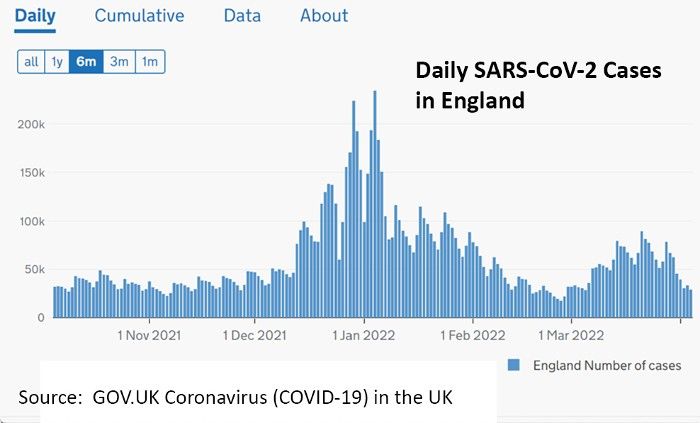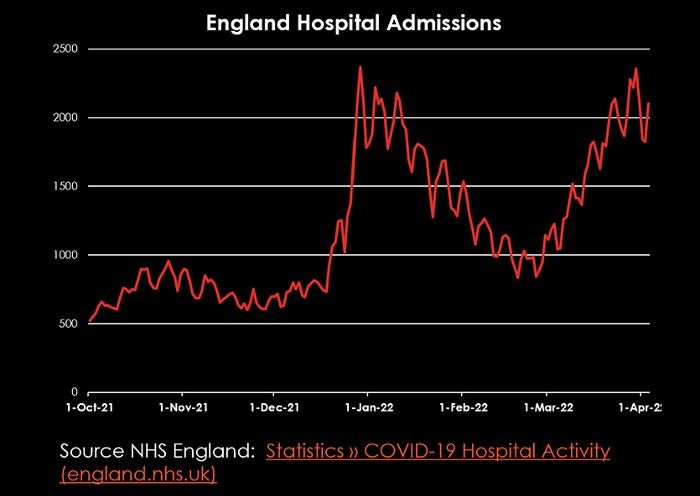Viewpoint: New UK Data Show BA.2 Variant Produces More Frequent Hospitalizations Than Omicron
Evidence shows the BA.2 variant is more infectious and virulent than the Omicron variant.
Kevin Kavanaugh, MD

As the United States continues to open and drop mandates, the BA.2 variant of SARS-CoV-2 is surging in many countries in Europe. The growing consensus is that this variant could be up to 80% more transmissible than the BA.1 or the Omicron variant. The variant has become the dominant strain in the United States and as of April 2, 2022, comprising 72% of sequenced cases.
There have been many news reports citing early data that indicate BA.2 has the same virulence as the Omicron variant (BA.1). This consensus occurred despite laboratory evidence showing the virus has a greater propensity to attack the lungs and cause more severe disease in hamsters. This animal evidence was largely discounted despite the lauding of data from a similar animal model which was used to predict that the Omicron variant was less virulent than the Delta variant.
Source: GOV.UK Coronavirus (COVID-19) in the UK

New data is beginning to emerge for the BA.2 variant, and the results do not look good. Data from the United Kingdom show the BA.2 surge to be about half that of the Omicron surge. However, the number of hospitalizations are the same and those caused by BA.2 may eventually surpass Omicron (see Figures). This evidence indicates that BA.2 is not only more infectious but also more virulent than the Omicron variant. It should be noted that the UK National Health Service Data has not yet been affected by the discontinuation of the United Kingdom’s testing program on April 18. However, in the near future expect to see a marked decrease in reported cases, which may not reflect a true reduction, just reduced access to testing.
The BA.2 variant also may evade immunity to a greater extent than the Omicron Variant. The FDA just pulled its authorization for the Vir Biotechnology Inc. and GlaxoSmithKline monoclonal antibody product that was effective against Omicron but not the BA.2 variant.
In the United States, cases are no longer dropping. Nationally, the case rate appears to have reached bottom and, in several states, cases are increasing. As of April 5, 2022, New York Times data show the 14-day change in cases is rising in Nevada (+104%), Nebraska (+102%), Massachusetts (+72%), Connecticut (+70%), New York (+62%), New Jersey (+50%), and Washington, DC (+45%).
Neither natural infection or a 2-course mRNA vaccine provides adequate protection as immunity wanes over time. Those who have had a recent Omicron infection may have greater protection. However, with only 66% of the United States’ population being fully vaccinated and only 29% receiving an additional dose, our country may be on the verge of a significant surge in both cases and hospitalizations. It is imperative for all eligible individuals to become vaccinated and obtain a booster.
Uncovering a Hidden Risk: Alcohol Use Disorder Significantly Increases C difficile Infection Rates
April 10th 2025A groundbreaking study reveals a strong connection between alcohol use disorder and increased risk for Clostridioides difficile infection, challenging traditional assumptions and calling for enhanced infection prevention protocols.
Bridging the Gap: Operating Room and Central Processing Unite to Improve Surgical Efficiency
April 8th 2025Communication breakdowns between the operating room and central processing led to delays and frustration—until collaboration, cross-training, and shared goals turned metrics around and strengthened teamwork.
